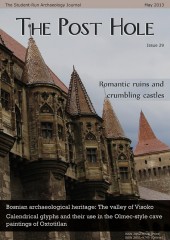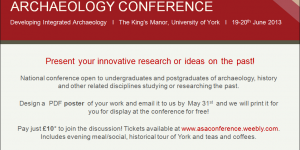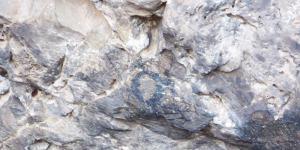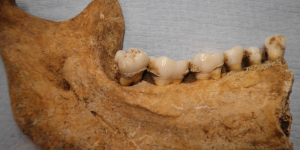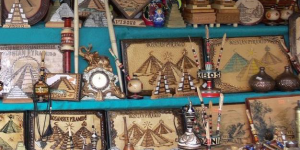The complex ethnic composition of the Balkans was often the cause of much conflict and political weakness in the area many centuries ago. When the former Socialist Federal Republic of Yugoslavia began its long disintegration process in 1990, those ethnic rivalries arose once again, and, after a number of wars, it resulted in new successor states.
One of these new independent states is Bosnia and Herzegovina, a country where the town of Visoko and its surrounding valley in the Zenica-Doboj Canton is based (Figure 1).
Visoko was once the centre of the Bosnian Kingdom and its importance in the region dates back to the Neolithic; it features Illyrian and Roman settlements, medieval fortresses and monasteries. It was an area of great interest both under the Ottoman Empire and during the Austro-Hungarian domination.
In order to understand more about the archaeology of this country and how closely related to politics it is, I recommend reading an article from Issue 14 of The Post Hole, ‘Nationalism, Archaeology and Yugoslavia’ by Mauro Rizzetto (2010). It explains that archaeology is forced to play a significant and often different role from one region and time to another, depending on what political ideology is in power at that moment. In this region, the archaeological record was sometimes used to justify a pan-Slav reality and other times to strengthen the different national identities.
Since the Bosnian war, each community (Christian Orthodox Serbs, Roman Catholic Croats and Muslim Bosnians) in Bosnia and Herzegovina has felt the need to reinforce their identity. The municipality of Visoko lies in the mainly Muslim part of Bosnia and Herzegovina. There, the search for a new past is needed, especially following mass-destruction of Bosnian cultural heritage in the conflict of the 1990s. Everybody can remember the destruction of the well-known Bridge of Mostar for instance.
After the break-up of Yugoslavia, Bosnia and Herzegovina now has no set of laws concerning heritage protection and how it is to be dealt with; this contradicts the identity reinforcement they are attempting. Therefore, the archaeological situation within Bosnia and Herzegovina is something to worry about, with few resources available and little in the way of a legal framework to protect national heritage. To clarify this precarious situation, the National Museum of Bosnia and Herzegovina was closed just last year.
The only protection measure is in the Dayton Accords, created after the Bosnian War. Annex 8 of the Accords laid down that property could be submitted to an international commission for designation as a national monument, but it did not specify how it was to be protected (anon. 1998). There is much work to be done before the legal situation can be considered anything close to normal, thereby fulfilling the Valletta Convention (1992); requirements which most European states are integrating into their planning framework.
According to many professional archaeologists, Bosnia and Herzegovina therefore faces a big problem as a result of wishing to reinforce its national identity, which has been taken in the wrong direction. This issue is the basis of the open letter of protest the European Association of Archaeologists (EAA) addressed to the Bosnian Government against the stream of supposed discoveries of pyramids in Bosnia.
The EAA also manifest their support to the professional archaeologists in Bosnia, who hoped they would receive more support for academic research and not be pushed aside by what is considered an unusual aim – searching for a lost civilisation in Europe that nobody can demonstrate any evidence for.
They do not even consider the possibility of remarkable archaeological finds in the Visoko valley, beyond the expected remains of the Butmir, Illyrian, Roman, Medieval or later cultures and chronologies. The refusal of archaeologists to accept the pyramids as genuine infuriate the nationalist press and public and foreign supporters alike. Likewise, mainstream archaeologists cannot stand people upholding this idea. Despite this, no archaeologist will stop the earthworks around and at Visoko because the Government of Bosnia and Herzegovina supports the project and has renewed permits for the summer of 2013.
Before all this, why not let someone come and prove their claims? Only time will bring definitive evidence or lack thereof. An individual claiming provocative theories about human history, challenging all we know about our past, is nothing to be afraid of since the scientific method is about proof and refutation. Archaeology is a non-dogmatic discipline and it, therefore, uses this method.
So not everything is negative, and there are positive aspects to the pyramid issue. Tourists are visiting Visoko and bringing money into the local economy – in an area with high unemployment, in a country ranked 129th in the world in terms of GDP per capita in 2012 (Central Intelligence Agency nd.); this is good.
In the meantime, why not let locals peddle trinkets showing pyramids and other similar souvenirs for tourists (Figure 2)? Unfortunately, there is a darker side to the story. In the middle of arguments between people supporting and refuting pyramids in Bosnia and Herzegovina, most Bosnian heritage is being forsaken.
The country has already suffered significant damage to its cultural and documentary heritage since the destruction of the National Library during the Bosnian war. We cannot allow this problem to become so extensive that the archaeological heritage is abandoned to looters or the wrongful manipulation of material remains from the past. Otherwise, we will lose an important part of the material culture of a people, and we may never understand them, or pass this information onto future generations.
A state-level culture ministry is still lacking from the Government of Bosnia and Herzegovina two decades following the Bosnian War. If put into existence, its first policy would be to record all the known surface archaeology in the country and create an up-to-date catalogue of what is there. No such catalogue exists now and no one is certain what archaeological sites may be in the Visoko area, or anywhere else in the country.
In response to this uncertainty, the Archaetypes International Research (AIR) association was recently established. AIR is an Italian-based non-profit association organised on a multi-disciplinary level, allowing the possibility for archaeologists, historians, anthropologists, language students, geologists and photographers to work together in the same field of research to develop heritage studies in the Visoko valley. This project aims to research historical sites and record surface archaeology (started over the last few years of surveys) in the valley. Nowadays the history of the valley still unfolds its beauty and our purpose is to assemble as much information as possible to be published in one single research publication. This publication is meant finally to promote academic and touristic interest both in Bosnia and Herzegovina and in Europe.
The aims and activities of the association are inspired by principles of equal opportunities between men and women, and respect for the inviolable rights of the person. Members of the AIR team are of variable study backgrounds and are connected between many different countries: Bosnia and Herzegovina, Croatia, Italy, the Netherlands, Poland, Serbia, Slovenia, Spain, Turkey and the United Kingdom.
With the AIR, the Zavicajni Musej of Visoko and the necessary permits with Bosnian Ministry in place, everything is ready to carry out the Visoko Valley Landscape Survey and Preservation project. The first step was to identify the uncatalogued archaeological sites. From this, nine major sites were found (Figures 3 and 4).
As primary research, the focus of the project will be on carrying out the following operations:
- Epigraphic and documentary research
- GPS mapping, GIS and WebGIS
- Clearing of vegetation
- Detailed planimetry mapping
- Conservation and preservation planning
- Georadar and geomagnetic scanning
- Small probing for land survey
- Collection of surface finds
- Preparation and placing of tourist infrastructure and path signs
- Laboratory data storing and deposit at local museum
- Publication of results
At the end of the project, the results will be presented publically to the citizens of Visoko during a ten day open photographic and video exposition. After that, it will probably have an exposition at the Zemaljski Muzej in Sarajevo. All maps, photos, aerial imagery and documentation gathered will be deposited at the Zavicajni Muzej of Visoko at the end of the season. Areas of interest for further developing of research will be catalogued and all results presented to the authorities.
This summer, AIR is welcoming students from across Europe to join in this survey and landscape project, expecting to create as many contacts with European universities as possible, in order for students to gain credits by participating in the project (Archaetypes International Research 2013). At present, students that have already got involved are from the following universities:
- Mostar and Sarajevo, BiH
- Padua and Venice, Italy
- Leiden, Netherlands
- Ljubljana, Slovenia
- Barcelona, Spain
- Istanbul, Turkey
- Leeds and London, UK
Presentations at the universities collaborating on the Project will follow during the year, helping to strengthen the links created and establishing, step by step, an international co-operation between researchers, institutions and citizens in Europe and in Bosnia and Herzegovina. This way, we hope that we can all benefit from a joint collaboration and start the long process of saving the rich heritage that lies in this interesting and beautiful Balkan country.
More information about the Project by AIR is available at: archaetypes.jimdo.com/projects/the-valley-of-visoko
Bibliography
- Archaetypes International Research (2013) ‘Projects: The valley of Visoko’. Available at: http://archaetypes.jimdo.com/projects/the-valley-of-visoko/ [Accessed 7th April 2013]
- anon. (1998) ‘Annex 8: Agreement on Commission to Preserve National Monuments’. Dayton Accord. Available at: http://www.usip.org/files/file/resources/collections/peace_agreements/da... [Accessed 3rd April 2013]
- Central Intelligence Agency nd. ‘Country Comparison: GDP per capita (PPP)’. The World Factbook. Available at: https://www.cia.gov/library/publications/the-world-factbook/rankorder/20... [Accessed 3rd April 2013]
- Barakat, S., Kojakovic, M., Simcic, V.S. and Wilson, C. (2001) ‘Challenges and dilemmas facing the reconstruction of war-damaged cultural heritage: The case study of Pocitelj, Bosnia-Herzegovina’, in R. Layton, P.G. Stone and J. Thomas (eds.) Destruction and Conservation of Cultural Property. London: Routledge. 168-181
- Rizzetto, M. (2010). ‘Nationalism, Archaeology, and Yugoslavia’. The Post Hole. 14. 10-13




![Figures 3 and 4: Sites in the central basin of Visoko immediately south of the town and [9] 7 km to the north (Reproduced with kind permission of AIR)](/sites/theposthole.org/files/styles/medium/public/uploads/207/34.png)
